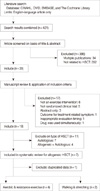2. Korean National Statistical Office. Statistics for the Cause of Death on 2012.
3. Park HJ, Park EH, Jung KW, Kong HJ, Won YJ, Lee JY, et al. Statistics of hematologic malignancies in Korea: Incidence, prevalence and survival rates from 1999 to 2008. Korean J Hematol. 2012. 47:28–38.
4. Santos GW. Bone marrow transplantation in hematologic malignancies: Current status. Cancer. 1990. 65:786–791.

5. Kim MH. Main symptoms of cancer patients by stage in a general hospital [dissertation]. 2010. Seoul: Hanyang Univ..
6. Kim KS, Cho MY. Hematopoietic stem cell transplantation experiences in Korea. Proceedings of the 9th Annual Meeting of the Korean Society of Hematopoietic Stem Cell Transplantation. 2004. 2004 Aug 20-21; Busan, Korea. Seoul: Medrang.
7. Pallera AM, Schwartzberg LS. Managing the toxicity of hematopoietic stem cell transplant. J Support Oncol. 2004. 2:223.
8. Courneya KS, Keats MR, Turner AR. Physical exercise and quality of life in cancer patients following high dose chemotherapy and autologous bone marrow transplantation. Psychooncology. 2000. 9:127–136.

9. Danaher EH, Ferrans C, Verlen E, Ravandi F, van Besien K, Gelms J, et al. Fatigue and physical activity in patients undergoing hematopoietic stem cell transplant. Oncol Nurs Forum. 2006. 33:614–624.

10. Schule K. The rank value of sports and movement therapy in patients with breast or pelvic cancer. Rehabilitation. 1983. 22:36–39.
11. Cunningham BA, Morris G, Cheney CL, Buergel N, Aker SN, Lenssen P. Effects of resistive exercise on skeletal muscle in marrow transplant recipients receiving total parenteral nutrition. JPEN J Parenter Enteral Nutr. 1986. 10:558–563.

12. Mello M, Tanaka C, Dulley FL. Effects of an exercise program on muscle performance in patients undergoing allogeneic bone marrow transplantation. Bone Marrow Transplant. 2003. 32:723–728.

13. Jadad AR, Moore RA, Carrol D, Gavaghan DJ, McQuay HJ. Assessing the quality of reports of randomized clinical trials: Is blinding necessary? Controlled Clinical Trials. 1996. 17:1–12.

14. Jarden M, Baadsgaard MT, Hovgaard DJ, Boesen E, Adamsen L. A randomized trial on the effect of a multimodal intervention on physical capacity, functional performance and quality of life in adult patients undergoing allogeneic SCT. Bone Marrow Transplant. 2009. 43:725–737.

15. Wiskemann J, Dreger P, Schwerdtfeger R, Bondong A, Huber G, Kleindienst N, et al. Effects of a partly self-administered exercise program before, during, and after allogeneic stem cell transplantation. Blood. 2011. 117:2604–2613.

16. Shelton ML, Lee JQ, Morris GS, Massey PR, Kendall DG, Munsell MF, et al. A randomized control trial of a supervised versus a self-directed exercise program for allogeneic stemcell transplant patients. Psycho-Oncology. 2009. 18:353–359.

17. San Juan AF, Chamorro-Viña C, Moral S, Fernández del Valle M, Madero L, Ramírez M, et al. Benefits of intrahospital exercise training after pediatric bone marrow transplantation. Int J Sports Med. 2008. 29:439–446.

18. DeFor TE, Burns LJ, Gold EM, Weisdorf DJ. A Randomized trial of the effect of a walking regimen on the functional status of 100 adult allogeneic donor hematopoietic cell transplant patients. Biol Blood Marrow Transplant. 2007. 13:948–955.

19. Velthuis MJ, Agasi-Idenburg SC, Aufdemkampe G, Wittink HM. The effect of physical exercise on cancer-related fatigue during cancer treatment: a meta-analysis of random ised controlled trials. Clin Oncol (R Coll Radiol). 2010. 22:208–221.

20. Decker WA, Turner-McGlade J, Fehir KM. Psychosocial aspects and the physiological effects of a cardiopulmonary exercise program in patients undergoing bone marrow transplantation for acute leukemia. Transplant Proc. 1989. 21:3068–3069.
21. Knols R, Aaronson NK, Uebelhart D, Fransen J, Aufdemkampe G. Physical exercise in cancer patients during and after medical treatment: A systematic review of randomized and controlled clinical trials. J Clin Oncol. 2005. 23:3830–3842.

22. Hayes SC, Spence RR, Galvao DA, Newton RU. Australian association for exercise and sport science position stand: optimising cancer outcomes through exercise. J Sci Med Sport. 2009. 12:428–434.

23. Szeluga DJ, Stuart RK, Brookmeyer R, Utermohlen V, Santos GW. Nutritional support of bone marrow parenteral nutrition to an enteral feeding program. Cancer Res. 1987. 47:3309–3316.







 PDF
PDF ePub
ePub Citation
Citation Print
Print


 XML Download
XML Download